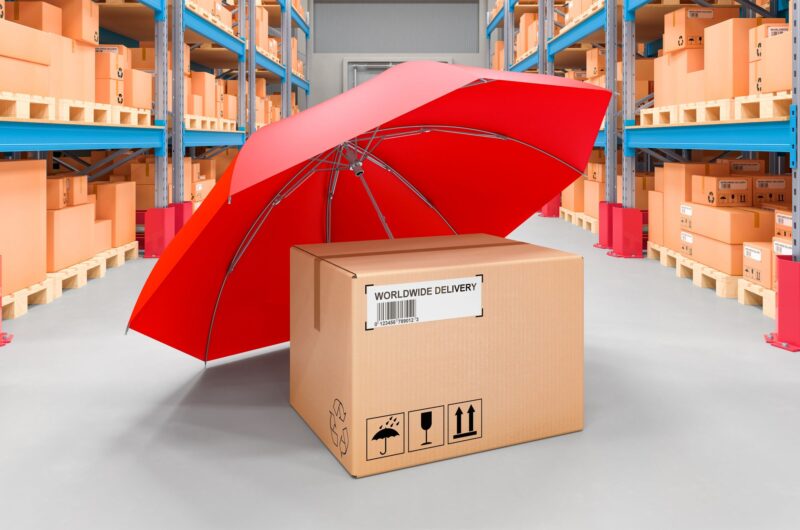Shipping internationally can be a complex and costly endeavor, but with strategic planning and a bit of know-how, you can significantly reduce the expenses.
In this article, we will explore various approaches and strategies that can help you find the most cost-effective way to ship goods across borders.
Understanding the Landscape of International Shipping
To start, it’s crucial to grasp the basics of international shipping. This involves recognizing the different modes of transportation available, such as air, sea, and land, and understanding their respective costs and timeframes.
Typically, air freight is the fastest but most expensive option, while sea freight offers the lowest costs but takes longer. Land transportation is a viable option for neighboring countries or within continents like Europe or North America.
Factors Influencing Shipping Costs

Several factors influence the cost of international transport. These include the size and weight of the package, the distance to the destination, and the chosen shipping method.
Additionally, customs duties, taxes, and insurance can add to the overall cost. Understanding these components is essential in finding ways to reduce transport costs. Check out the most competitive shipping costs at Qube Cargo.
Choosing the Right Shipping Partner
Selecting the right shipping partner is crucial. Major global carriers like DHL, FedEx, and UPS offer reliable services but can be pricey. On the other hand, local carriers might provide more competitive rates for specific regions.
It’s beneficial to compare prices and services of different carriers to find the best fit for your needs.
Utilizing Consolidation Services
Consolidation services can be a game-changer for reducing transport costs. This method involves combining multiple shipments heading to the same destination into one. It’s particularly cost-effective for smaller shipments, as it allows shippers to share the transportation costs.
Optimizing Packaging
Effective packaging optimization can lead to significant savings. The goal is to use the smallest and lightest packaging possible without compromising the safety of the contents. This reduces the dimensional weight of the shipment, a factor that carriers often use to calculate shipping costs.
Negotiating Rates with Carriers
Don’t shy away from negotiating with carriers. If you’re transporting in high volumes or planning to become a regular customer, carriers might be willing to offer you discounted rates. Building a good relationship with your carrier can open doors to special deals and discounts.
Understanding and Navigating Customs Regulations

Navigating customs regulations is a critical part of international transport. Missteps here can lead to delays and additional costs. Familiarize yourself with the customs regulations of the destination country to ensure smooth transit and avoid unexpected expenses.
Leveraging Technology for Cost-Effective Shipping
Finally, leveraging technology can streamline the transport process and cut costs. Many online platforms and tools allow you to compare rates, track shipments, and manage logistics more efficiently.
Utilizing these tools can help you make informed decisions and reduce administrative burdens.
Exploring Different Shipping Routes
The route your shipment takes can significantly impact the cost. Direct routes are typically faster and more expensive, while indirect routes can be cheaper but take longer. When time is not a critical factor, choosing a longer, indirect route can save money.
It’s also worth considering the political and economic stability of the transit countries, as disruptions in these regions can affect transport times and costs.
Seasonal Considerations in Shipping
Seasonality can influence transport costs. During peak seasons, like the holidays, demand for shipping increases, leading to higher prices.
Conversely, during off-peak times, carriers may lower rates to attract more business. Timing your shipments to avoid peak seasons can result in substantial savings.
Bulk Shipping for Cost Efficiency
For businesses that regularly ship large quantities, bulk shipping is a cost-effective option. Bulk shipments typically receive lower rates from carriers due to the high volume. This approach requires good planning and coordination but can lead to significant reductions in per-unit transport costs.
Insurance: Balancing Cost and Protection

Insurance is a critical aspect of international transport, offering protection against loss or damage. However, it adds to the overall cost. Evaluate the need for insurance based on the value of the goods and the risk involved in the shipping process.
Sometimes, choosing a more reliable shipping method can be a better investment than opting for additional insurance.
Customs Brokerage Services
Using a customs broker can help navigate the complex world of international trade regulations. While this adds cost, it can save money in the long run by avoiding delays and penalties associated with customs non-compliance. For those new to international transport or dealing with complicated shipments, a customs broker is a valuable investment.
Leveraging Free Trade Agreements
Understanding and taking advantage of free trade agreements between countries can lead to significant savings in customs duties and taxes.
These agreements often reduce or eliminate the tariffs on goods traded between member countries. Familiarizing yourself with these agreements can help you choose more cost-effective shipping routes and destinations.
Regular Audits and Reviews
Regularly reviewing and auditing your transport processes can uncover areas for cost savings. This could involve reassessing your choice of carriers, renegotiating rates, or changing your packaging methods.
An ongoing evaluation ensures that you’re always using the most cost-effective methods for your international shipping needs.
Building Long-Term Relationships

Finally, building long-term relationships with carriers and logistics providers can lead to better rates and services. Loyalty and consistent business volume can give you leverage in negotiations and access to exclusive deals and discounts.
Final Thoughts
International transport is an intricate process with many variables affecting cost. By understanding these variables and implementing strategies like choosing the right shipping partner, optimizing packaging, navigating customs efficiently, and leveraging technology, you can significantly reduce your international transport costs.
Remember, the cheapest option isn’t always the best. Balancing cost with reliability and speed is key to finding the optimal solution for your international shipping needs.
Related Posts:
- Is Colorado School of Mines Football Good? - In…
- How to Do Freight Audit Right? Key Tips for…
- How Accurate Is Mold Air Testing? Tips for Reliable Results
- What to Look for in a Relationship: A Comprehensive…
- When to Move from Independent to Assisted Living: A…
- Top 10 Things To See and Do in Egypt Before You Die…













